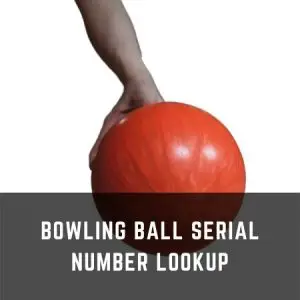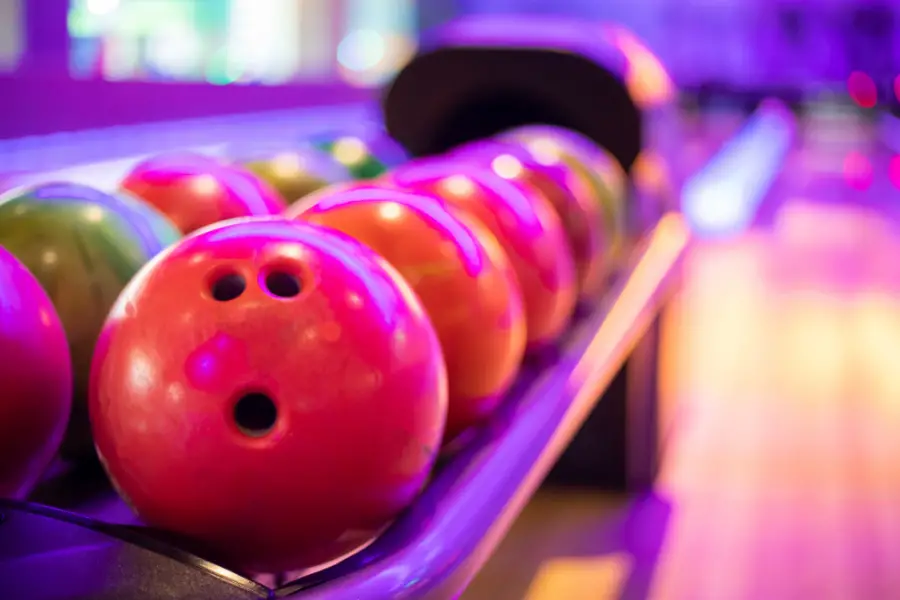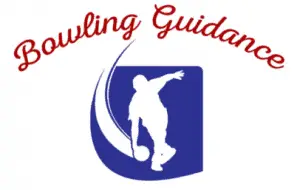
Surprise! Yes, bowling balls have their own serial numbers. Even if you have never noticed them, they are there. But are those numbers meaningless? Of course not! Each digit or letter means something. You can get a lot of information just by looking and reading the serial number. So, how do you read the bowling ball serial number? What do they exactly mean? What are the rules behind that? Let’s take a deeper look at that, shall we?
What do the numbers on a bowling ball mean?
You can see two types of numbers on a bowling ball. Numbers such as— 13, 14, 15, 16, etc. indicate the weight of the bowling ball. The longer-digit numbers, however, indicate the serial number of the bowling ball. The serial numbers on the bowling balls are very small in size and so they are hardly noticeable. The serial number is usually found at the bottom of the ball, meaning, you can find it by rolling the ball down the logo.
So what do these serial numbers specify? Well, these numbers are there to help manufacturers track their produced products. The numbers at the bottom of the ball tell the manufacturer when they made it, and at what factory the ball was made in, and sometimes it can also point out who made it. Some serial numbers may help the manufacturer trace what kinds of materials they used to produce the ball.

How Do you read Bowling Ball Serial Number?
Now, that is a tough question to answer. Why? Well, back in the 90s manufacturers followed a different method to put their serial numbers on the balls. On top of that, we have a different problem nowadays. You will see that each ball-manufacturing company has its own system when it comes to using the serial numbers to determine what kind of ball that is, when it was made, and so forth. Some ball makers have even updated their serial numbering system.
I have recently had a chat with one of my fellow bowlers. He was saying when he shopped for Brunswick balls back in 1996, they used a different method for their serial numbers than they do now. In the old balls, the first character was a digit and it often indicated what year it was made in (e.g., 5B112503). He said, his 2014’s Brunswick ball has a different style of serial numbers where the first character is a letter and then there are some numbers, meaning, it is an alpha-numeric string (e.g., HFL51955).
Bottom line is that there are multiple systems and each ball maker comes up with its own unique serial numbers to differentiate the bowling balls in the market. However, most companies these days have letters and numbers in their serial numbers. The letters are generally put at the beginning of those unique numbers. Since we just discussed Brunswick’s numbering system, let’s take a look at their current method.
The very first letter of the serial number on a Brunswick bowling ball indicates the month it was manufactured in. For example:
January – A, February – B, March – C, April – D, May – E, June – F, July – G, August– H, September – I, October – J, November – K, December – L.
The second character is also another letter that specifies the year of the ball production. For example:
2005 – V, 2006 – Y, 2007 – Z, 2008 – A, etc.
Therefore, a Brunswick bowling ball manufactured in March 2008 will read CA278562.
The rest of the digits of the serial numbers will give you necessary information about the material of the ball, where the ball was produced, and who particularly manufactured it. Each company adds its own creativity and applies a differentiated method to create the serial numbers. Companies like Storm and Rotogrip has their own numbering system. The first two characters specify the year, followed by a three-letter code. After that, you will see some numerical values that indicate the batch codes of the bowling balls.
After the indication of the manufacturing date, you will come across some remaining numbers. It is the Stock Keeping Unit (SKU) number. This SKU number is supposed to match the box or packaging your bowling ball came in. Like the serial numbers, the SKU is also unique to each ball.
Is a Bowling ball without a serial number legal to use?
The serial numbers you find on bowling balls, well, how important do you think they are? Yes, they help you remember which year you purchased the ball and what is the material of it. It also helps manufacturers keep track of their finished goods. But the serial numbers are most important for those participating in bowling tournaments and competitions.
Are you planning to compete in a bowling competition soon? Then you definitely need a ball with a visible serial number. USBC has declared that bowling balls without any serial number would not be counted as legal. If the serial number is smudged or got worn away, your ball will be illegal to use. What can you do about that? Well, you can engrave the numbers again before your competition. Just take your bowling ball to the nearest pro shop and they will identify the ball and etch a serial number in. The numbers won’t even have to be correct as it is hard to trace the batch number. So, just make sure you have a serial number that is visible before you take a part in a competition.
Conclusion
The serial numbers of bowling balls aren’t discussed enough. Because of its small size, many of us don’t even notice it in the first place. Do remember, if you’re going to play on a much more serious stage someday, having a bowling ball with an accurate serial number is important. Without that, you can’t even participate. Moreover, if you have multiple bowling balls in your arsenal and you forgot the material or which year you bought the ball, serial numbers are a great way to remind you of that.

